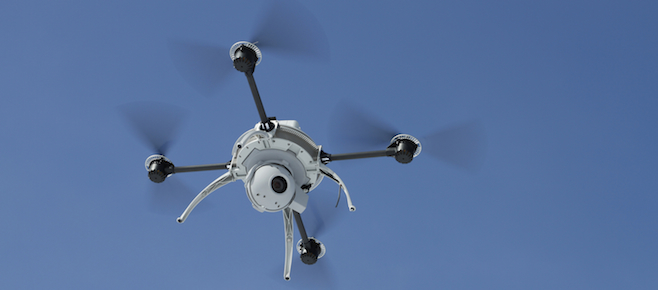Military drones put to good use
Keeping track of cattle and, perhaps one day, delivering the mail are emerging applications for UAVs
Share

A fledgling company in southern Alberta is sending drone technology originally designed for the military into the sky to take pictures of sugar beets, potatoes and even cattle in an effort to help farmers better manage their crops and livestock. The unmanned aerial vehicles (UAVs) used by Lethbridge-based Isis Geomatics can fit in a backpack when disassembled and, when launched, use cameras to tag each part of a field with an exact location. A farmer can then scan the images to determine where to apply water or fertilizer or keep track of cattle.
Agriculture is just one emerging commercial application for UAVs. Drones, such as those manufactured at Waterloo, Ont.-based Aeryon Labs, are becoming easy enough for anyone to operate; they’ve been used so far for wildlife surveys and to map shipping routes. Isis hopes to add oil- and gas-field surveying to its services. Other firms are planning to use drones as super-efficient couriers in remote areas. “People are recognizing the opportunities,” says Aeryon Labs’ vice-president of marketing, Ian McDonald.
In agricultural applications, the drones are part of a trend toward precision agriculture: using technology to reduce costs and maximize yields. The UAVs that Isis employs are a huge improvement on the field surveys CEO Steve Myshak used while studying geography at the University of Lethbridge. Some of the methods “were pretty archaic—using boom trucks and scaffolding and cranes,” he says. Myshak partnered with classmate Owen Brown to launch Isis in June.
Business has been better than expected, but there are challenges—among them the high cost of UAVs. An Aeryon Scout, the type Isis uses, is $60,000, making UAVs cost-effective for high-value crops only. In southern Alberta, this means sugar beets, potatoes and seed canola. “As it gets cheaper and some of the farmers adopt the technology, it will be more common,” says Myshak. “Right now, the price point is so high and the technology is so new that they don’t really understand how it can help them.” Aeryon’s McDonald expects to see more service providers like Isis enter the market before farmers buy their own drones.
Users also need permits from Transport Canada, and there are restrictions on flights. In the U.S., regulations are even tighter. The Federal Aviation Administration (FAA) only grants permits for UAVs to colleges, but some American entrepreneurs see the potential and are partnering with public agencies to test their designs. Young Kim, general manager of Bosh Precision Agriculture in Virginia, hopes UAVs will be approved for civil applications in 2015, with police and firefighters getting initial permits. Agriculture could follow, he hopes, mainly because it doesn’t face the safety and privacy concerns present in urban centres. “We’re all out in rural areas and we’re going to be flying over flat terrain without a lot of man-made obstacles,” he says.
Once the technology is approved, the possibilities are endless. Two U.S. companies are currently testing technology to create a “matternet,” a kind of physical Internet that would use UAVs to quickly deliver small packages such as urgent medications or blood test results between various points. Such a system could be used in remote areas, or in developing countries with poor infrastructure. But those applications are years away and, until the FAA loosens its regulations, American UAV entrepreneurs are stuck in a holding pattern.